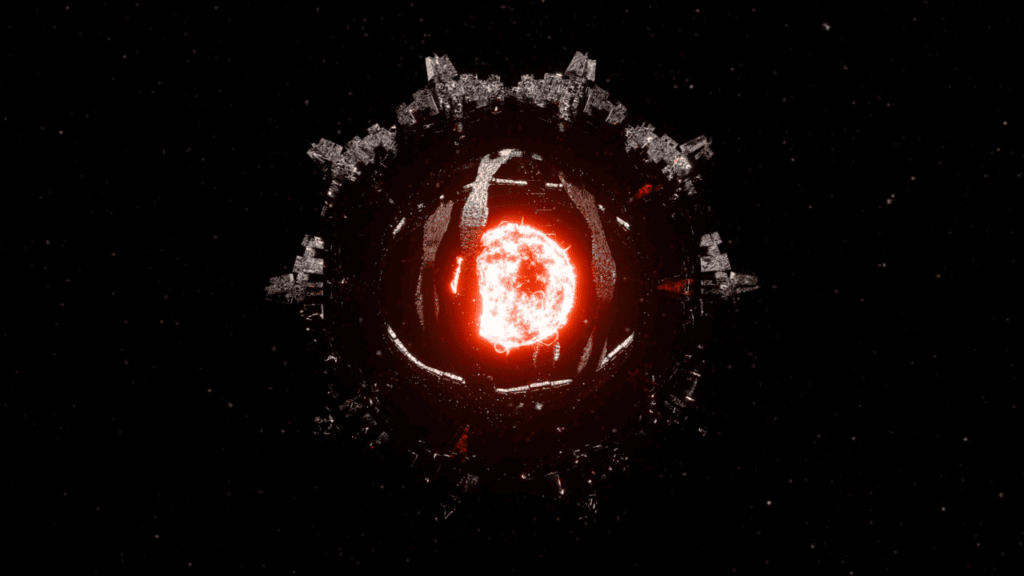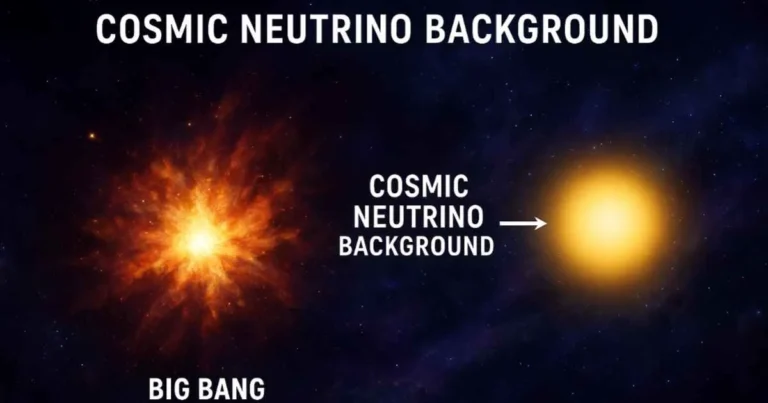Unlocking the Secrets of Alien Astroengineering in 2025

Tags:
- Astroengineering
- Dyson Sphere
Imagine lying on the grass looking at the stars, asking yourself whether, somewhere out in space, an alien civilization is in the process of reprogramming the entire cosmos. The study of alien astroengineering is the study of how advanced alien civilizations may build megastructures or constructs to harvest energies of the cosmos. The study of alien astroengineering shows us the extreme potential of advanced civilizations to those of us interested in astronomy, students, or science lovers. The way we can picture ourselves in the role of alien astroengineering brings forth wonder into our minds of possibilities if advanced alien civilizations exist. In this article, you will be informed and educated about alien astroengineering and how that relates to human technologies today, and why it may be relevant in the current stage of the historical human continuum. We will try to have a rudimentary discussion of the megastructures so often referred to as the Dyson Sphere, and even star lifting technology! When I cracked this article open and planned to write this, I was amazed by the concept. If you are ready to explore the cosmos in a way you may have never imagined, now is the time to explore imagining what advanced alien civilizations capable of reconstruction would mean for our understanding of the cosmos.
What Is Alien Astroengineering? A Beginner’s Overview
Alien astroengineering is the hypothetical construction of immense, planet- or star-sized structures by advanced extraterrestrial civilizations. Imagine a cosmic building project—the goal of which is so grand it can alter the light from a nearby star. Why is this important? Because we can study these megastructures and possibly gain some insight into the existence of intelligent life beyond Earth.
Here’s my takeaway: Alien astroengineering is appealing because it combines hard science married to imagination. In these discussions, it is not little green men we are concerned with, but civilizations so advanced they’re able to manipulate stellar materials. For example, astronomers theorized about Kardashev Type II civilizations that can harness the total energy output of their star. Theoretically, these civilizations have left imprints detectable with modern telescopes: crazy light patterns; odd starlight variations; additional infrared emissions, etc.
Key Concepts
- Megastructures: Huge constructs, like Dyson Spheres or stellar engines.
- Energy Sources: Using stars or planets as power sources.
- Observational Clues: Irregular light curves or excess infrared emissions.
Could Dyson Sphere Megastructures Exist?
Now let’s turn our attention to the megastructure of alien astroengineering, the Dyson Sphere. Proposed by physicist Freeman Dyson, this megastructure involves a civilization encircling a star by a shell or swarm of satellites to harness the star’s energy. This may sound outrageous, but it is not as outrageous as you may think.
In 2025, astronomers are actively hunting for Dyson Spheres with telescopes such as the James Webb Space Telescope. A recent study suggested that as many as 7% of stars in a study of 5 million exhibited infrared signatures that may suggest that partial Dyson Spheres could exist. These structures would emit waste heat that would be identified as excess infrared light. This is an outstanding case study for students and tutors in the integration of theoretical physics and observational astronomy.
Identifying Dyson Spheres:
- Identify dimming stars with irregular light patterns.
- Identify excess infrared emissions spectroscopically.
- Eliminate natural variables such as comets or dust clouds.
As a tip, if you are an astronomy enthusiast, you can search for these signatures by using open-source data from sources such as Breakthrough Listen. This is a great way to actively do real-time science and explore different aspects of it.
What Is Star Lifting Technology and Why Does It Matter?
Curious about how a civilization might “mine” a star? If so, get ready to meet star lifting technologies. Star lifting is the act of removing material from a star’s surface to feed stellar material into a starship as an energy or raw material source. In other words, it is cosmic resource extraction that is the defining trait of a Kardashev Type II civilization.
While this may seem intimidating, here is the focused idea of how it can be done with star lifting technologies: magnetic fields or high-energy beams siphoning off a star’s outer layers to grab hydrogen and helium. So you get the physical resources, and you extend the star’s life because you have reduced its mass. For the astronomy blog legions, this topic will provide a plethora of interesting discussions about cosmic sustainability.
Practical application for studies
- Modeling: Create simulations to better understand how star lifting works and its impact on stellar evolution.
- Observation: Identify stars with unusual mass loss and abnormal chemical composition.
- Debate: Will star lifting explain the anomalies subconsciously seen in stellar spectra?
I will be honest, wrapping your head around star lifting is sometimes difficult, but once you get there, you will see it is an important perspective in the search for advanced alien civilizations.
Signs of Advanced Alien Civilizations: What to Look For
How do we know whether or not there is an alien civilization out there remaking the universe? The answer is to look for signs of advanced alien civilizations through astroengineering projects. Due to the variety of potential signals of advanced alien civilizations, the key is to look for evidence and have a means of capturing it. The good news is that clues for advanced alien astroengineering exist. While they can be muffled, we can detect them with today’s technology.
For example, KIC 8462852 (Tabby’s Star) drew significant attention when it was observed to dim at very irregular intervals. This raised the question of possible partial Dyson Sphere construction, which ignited media speculation about finding aliens. Of course, in this case, it is still far more likely that there are natural planetary bodies or comets surrounding this star to cause the event, but it illustrates how we look for evidence of such anomalies. Likewise, current or former radio signals that are unusual are something projects like the Search for Extraterrestrial Intelligence (SETI) are continuously scanning for.
4 Signals of Alien Astroengineering
- Irregular Dimming of Stars: Possible megastructures like Dyson Swarms.
- Increased Infrared Emission: Indications of energy-intensive astroengineering.
- Increased Stellar Motion: Possible signals of stellar engines or star lifting.
- Artificial Radio Signal: Signals that follow the timeline of large construction or hardware projects.
If you are an undergraduate or recent graduate, you can try to look for evidence within public datasets from the Gaia or the TESS missions. You may come across something that helps you generate a cosmographical clue for your next research paper.
Challenges in Detecting Astroengineering Projects
To be realistic, finding extraterrestrial astroengineering projects in astronomy is not easy. Our universe is huge, and it is getting bigger by the minute. Sure, we have some powerful telescopes like the Hubble Space Telescope, the James Webb Space Telescope (JWST). But they do have limitations.
One of the main challenges? Distinguishing artificial platforms from natural phenomena. Dust clouds, exoplanets, or pulsars can mimic the signals we’re looking for.
Another scale challenge. The Dyson Sphere may only cover partial portions of the star, so that will make it more difficult. Furthermore, if we are thinking of advanced civilizations, it could be that they found a tech that we can’t possibly conceive of that will make our search methods obsolete. For tutors, it’s a nice prompt for critical thinking: ‘How do we build experiments for the unknown?’
It would be a disservice for me to propose some tips to deal with your challenges:
- Compare and cross-reference the data from multiple telescopes.
- Use machine learning tools to filter out the natural noise from your data.
- Team up with (other) global research observatories to complement your coverage.
Next Steps in Exploring Alien Astroengineering
Alien astroengineering isn’t just an example of thought—it’s a window into the possible realities of advanced civilizations. From Dyson Sphere megastructures to star lifting technology, these investigations open our minds to thinking big about the universe. You’ve been taught to identify proxies for evidence of an advanced alien civilization to be discovered, learned what it means for Kardashev Type II civilizations, and how to participate in real astronomy projects in your world. It’s time for you to act. Explore open-source datasets, participate in a SETI project, or simply marvel at the stars under a new lens. The universe is full of opportunities—will you be the one to find the next celestial clue? Please comment below or tell me: what is the craziest idea around astroengineering you have ever heard?
Comments
Please log in to leave a comment.
Related Posts

Cosmic Neutrino Background: The Ghostly Relic of the Big Bang
The Cosmic Neutrino Background is the ghostly radiation from the Big Bang’s first second. Undetected yet essential, it holds secrets about neutrino mass, dark matter, and the universe’s origin story. Here’s why scientists are chasing this invisible relic.

Why Colonizing Moons Instead of Planets Might Save Humanity
For decades, the dream of leaving Earth has revolved around colonizing planets like Mars or even Venus. But what if the real key to humanity’s survival lies not on planets, but on their moons? Worlds like Titan and Europa offer resources, protective environments, and mysteries that may make them far more suitable for future colonies […]

Why Colonize Mars Instead of Other Planets?
Over the past few years, the concept of why colonize Mars and not other planets for human life has shifted from science fiction to a strong scientific and practical argument. Mars possesses a uniquely well-equipped environment to support life beyond Earth — from water ice reserves and habitable gravity to a day-night cycle that most […]